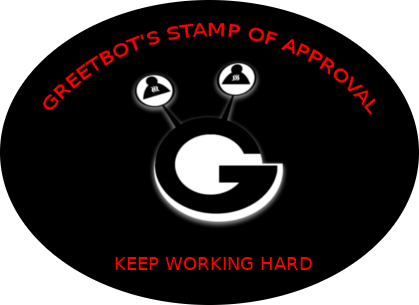Straight, No Chaser
I’m going to review “Thelonious Monk: Straight, No Chaser” (1988) which is a documentary (distributed by Warner Bros, made by Malpaso Productions and directed by Charlotte Zwerin) revolving around the life of the popular bebop pianist and composer Thelonious Monk. The movie was an incredible insight into the music performances by Monk and a glimpse into Monk’s life. Monk was an innovator and a major jazz composer who didn’t play/compose like a typical Bopper. The way he plays piano, right from the opening scenes – starting from “Evidence” – makes it seem as if he knows exactly what every note means. Monk’s music style was unorthodox and incorporated an idiosyncratic expression and represented independence. With regards to his “pianism”, one thing I greatly noticed during the recordings was Monk’s unique and rather unusual piano style. His piano touch was harsh and he often attacked the keyboard (with straight fingers and elbow at an angle) for every note rather than maintaining legato. Even when Monk was comping, it seemed different from most accompanists. In most of his recordings, silent notes were as equally important as sound; a sound note was equally important as a dissonant chord. A combination of all these styles makes Monk’s music style unique. Furthermore, it reflects his personality, level of energy, sense of humor, and the notion that there shouldn’t be any limits to the composition.
The performances throughout the movie featured the legendary Thelonious Monk Quartet and Thelonious Monk Octet. The quartet consisted of Charlie Rouse on the Tenor Saxophone, Larry Gales on Bass and Ben Riley on Drums. Thelonious Monk Octet featured Charlie Rouse and Johnny Griffin on the Tenor Saxophone, Phil Woods on the Alto Sax, Ray Copeland on the Trumpet, Jimmy Cleveland on the Trombone, and Larry Gales and Ben Riley on the Bass and Drums respectively. The duo-piano performance in the documentary featured Tommy Flanagan and Barry Harris. The songs in their order of appearance in the documentary are: Evidence, Rhythm-A-Ning, On the Bean (Coleman Hawkins and Monk), ‘Round Midnight, Well, you needn’t, Bright Mississippi, Blue Monk, Trinkle Tinkle (John Coltrane and Monk), Ugly beauty Ask me now, Just a Gigolo, Crepescule with Nellie, I Should Care, We See, Oska T, Epistrophy, Don’t Blame Me, Ruby, my Dear, I mean you, Lulu’s back in town, Pannonica, Boo boo’s birthday, Misterioso, Monk’s Mood, Sweetheart of all my dreams, and ‘Round Midnight.
I’m going to review some of the songs – from a personal perspective – that I enjoyed in the documentary in the following section. First one is “Evidence” – the opening song – in which it was surprising to see Monk stand up from the keyboard and dance for a while before returning. “Evidence” is a 32-bar AABA masterpiece – based on “Just You, Just Me”. I especially liked the slow rhythm, repeated notes, and melody lines in this recording. His feet tapping and jaw moving up and down to the music was rather entertaining to watch. Another classic recording is the mellow waltz “Ugly Beauty” – a really pleasant tune, which involved Monk’s weirdness and Charlie Rouse’s amazing sax solo. The bass solo (Larry Gales), followed by a sudden tempo change brings a jolt of joy. The recording is well captured, with Monk’s ethereal close-ups. “Epistrophy” comes next. The song was a rather different (and very confusing to analyze) piece, with each chorus taking 32 bars form (AABA). It starts with John Simmon’s and Monk’s loud notes – 3 notes and 2 accompaniment (drums). The walking bass line and drums form the rhythm section with the piano and tenor sax the melody line. Charlie Rouse’s sax improvisations are as good as Monk’s piano solo and accompaniments. Next up is “Don’t Blame Me” – written in AABA form (32 bar), and performed in 1989 at the Newport Jazz festival. We again see a close glimpse of Monk’s unique playing style – he’s tapping the piano almost as if someone knocks a door. His feet tapping also reflect the unusual surprises in the chords. Monk’s enduring yet eccentric music style, makes his piano solos, one of the best piano solos I’ve ever heard. The tone colors and underlying chords make the tune very interesting. The non-tonal blue notes, the amazing melody, and then the sudden dissonance – that’s Monk for us. Finally, Round Midnight, which is notably Monk’s best-known jazz composition and the most recorded jazz standard by any jazz musician. Some critics have also called it the “National Anthem of Jazz”. I found Round Midnight not only very dark but also soothing at the same time. The form of the song is AABA with some very different and unique tonal colors and melodic sequences. Overall, Monk had a unique outlook; and quite unorthodox, but artistic style of playing the piano. I still can’t believe he was once featured on the cover of the Time magazine – as narrated by the documentary. It was sad to learn about his later life and mental illness which worsened in the late 1960s. He had to withdraw himself from the limelight and disappear from the scene in the early 1970s, ultimately dying of a stroke in 1982 – but alive in the heart of millions of Bebop fans. I thoroughly enjoyed this documentary which was full of unexpected surprises – just like Monk’s music. In his own words “the piano ain’t got no wrong notes…”.
Hi. I am @greetbot - a bot that uses AI to look for newbies who write good content.

I found your post and decided to help you get noticed.
I will pay a resteeming service to resteem your post,
and I'll give you my stamp of automatic approval!
Resteemed by @resteembot! Good Luck!
The resteem was payed by @greetbot
Curious?
The @resteembot's introduction post
Get more from @resteembot with the #resteembotsentme initiative
Check out the great posts I already resteemed.
You were lucky! Your post was selected for an upvote!

Read about that initiative